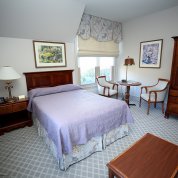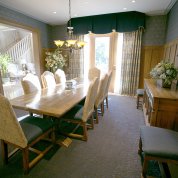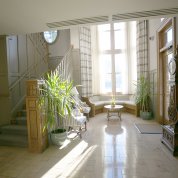Adding Light, Color, Calm
Safra Family Lodge Gets Makeover
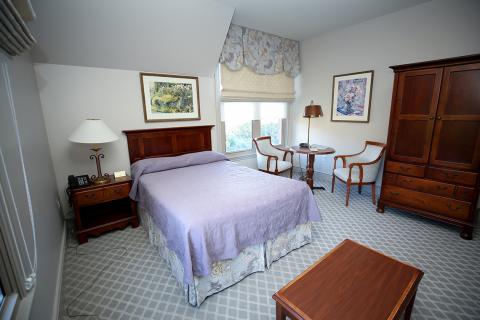
Photo: Foundation for the NIH
The Edmond J. Safra Family Lodge recently underwent its first substantial redesign since opening in spring 2005. Strategically located on campus just steps from the hospital, near the intersection of Center and Convent Drives, the lodge offers temporary residence for adults participating in Clinical Center research and their families.
The Foundation for the NIH, which partnered with the Edmond J. Safra Philanthropic Foundation to underwrite the project, held an event on Oct. 24 to showcase the new spaces for lodge supporters. NIH director Dr. Francis Collins, Clinical Center Chief Operating Officer Pius Aiyelawo, FNIH president and executive director Dr. Maria Freire and FNIH Vice President of Advancement Robert Balthaser offered remarks. Brief tours followed a short presentation by designers.
According to Balthaser, scheduling for the makeover was based on a lifecycle plan developed for the lodge when it was first built. After 13 years in constant use, the 34 guest rooms and public spaces were showing signs of wear. When word of the need reached philanthropist and FNIH board member Lily Safra, she advised FNIH, in partnership with NIH, to organize a remodeling effort and engage a design team.
“The aim for the [update] was to promote serenity and calm through the use of color and lighting,” Balthaser explained. “We wanted it to be transformative and I think the designers accomplished that.”
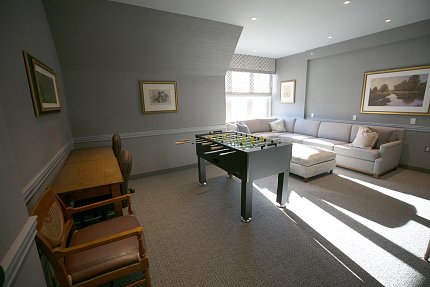
Photo: Foundation for the NIH
Improvements included new interior paint, upgraded lighting as well as fresh upholstery, wall coverings, carpet and draperies. Refurbishments took fewer than 4 months to complete and were accomplished with a nearly full house of residents.
In fact, input from lodge guests was taken into consideration alongside the project team’s recommendations.
Lodge staff engage families as they leave, Balthaser noted. “We’re always receiving feedback. That’s how we learned we needed to make the lounge a little more modern.”
The third floor common area—a hangout space for younger family members—got a new audio system with built-in earbud and headphone receiver jacks to help minimize any noise disruption for guests using that room. That was added to the widescreen television, PlayStation video game system and new Foosball table. Another popular refuge, the library, received a new conference-style table as well as new sconces. Guest rooms were spruced up with adjustable lighting and USB electrical outlets, in addition to custom window treatments.

Photo: Foundation for the NIH
Each year, the lodge provides a temporary home for hundreds of people who are seriously ill and their loved ones. In 2017, more than 9,200 room nights were reserved for patients and caregivers.Guests stay on average about 7 days. The stay can be longer, depending on research requirements. Since opening in 2005, the lodge has welcomed close to 140,000 residents.
In all, the ultimate goal of the restoration was to offer a sense of hope and help ease the way for patients and families experiencing a difficult time in their lives.
“As doctors, nurses and any number of other caretakers will attest, a patient’s home life and non-treatment times are all crucial considerations,” Balthaser concluded. “We know that the lodge is an essential part of the clinical formula. It’s very important that we remember that the lodge is home away from home for its residents and our top priority is to provide comfort and a sense of calmness to the patients and their families who are making vital contributions to our world’s health.”

